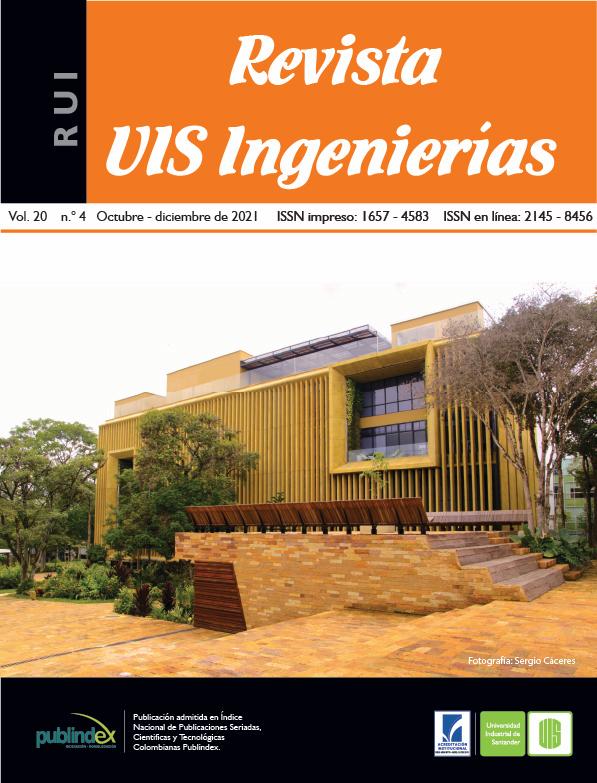Published 2021-07-16
Keywords
- catalytic converters,
- noble metals,
- oxidation-reduction,
- regeneration,
- technical feasibility of recovering
- re-use in cars,
- mitigating the effects of pollution ...More
How to Cite
Abstract
Two used commercial waste catalytic converters (CCU and CCA) were studied using the programmed temperature oxidation technique (TPO), temperature-programmed reduction (TPR), scanning electron microscopy (SEM), and energy dispersion spectroscopy of X-ray (EDS). The scanning electron microscopy showed the CCU and CCA converters of the morphology of the particles in uniform spheres of 0.05 and 1.5 µm and irregular of 2 µm. The results of the elemental analysis using the EDS technique showed for the CCU converter the presence of the noble metals platinum, palladium (Pt, Pd), and iron (Fe) as an active phase, and phosphorus oxide (P2O4), chromium oxide (Cr2O3) and calcium oxide (CaO) as promoters. On the contrary, the CCA converter presented as an active phase noble metals of Pt, Pd, and Rh and as promoters manganese oxide (MnO2), barium oxide (BaO), zirconia (ZrO2), and ceria (CeO2). The oxidation results at programmed temperature (TPO) showed the consumption of oxygen through the formation of the oxide species, and the subsequent reduction treatment at programmed temperature (TPR) showed the recovery of the reduction of the metallic species of Pt, Pd, Rh, and Fe (active phase) present in catalytic converters. This fact demonstrated the technical feasibility of recovering the activity phase of the reduced metallic surface in used commercial catalytic converters from waste for its re-use in gasoline internal combustion automobiles from mitigating the effects of pollution of emission gases.
Downloads
References
[2] O. Guarín-Villamizar, “Metodología para evaluación de la condición ambiental en microcuencas urbanas”, Revista UIS Ingenierías, vol. 16, no. 2, pp. 141-149, 2017, doi: 10.18273/revuin.v16n2-2017013.
[3] G. C. Koltsakis, A. Stamatelos, “Catalytic automotive exhaust after treatment”, Prog. Energy Combust. Sci., vol. 23, no. 1, pp. 1-39, 1997, doi: 10.1016/S0360-1285(97)00003-8.
[4] J. P. Dacquin, C. Dujardin, P. Granger, “Surface reconstruction of supported Pd on LaCoO3: Consequences on the catalytic properties in the decomposition of N2O”, Journal of Catalysis, vol. 253 no. 1, pp. 37-49, 2008, doi: 10.1016/j.jcat.2007.10.023.
[5] J. R. González-Velasco, J. A. Botas, R. Ferret, M. Pilar González-Marcos, Jean-Louis Marc, A. Gutiérrez-Ortiz, “Thermal aging of Pd/Pt/Rh automotive catalysts under a cycled oxidizing–reducing environment”, Catalysis Today, vol. 59, no. 3-4, pp. 395-402, 2000, doi: 10.1016/S0920-5861(00)00304-7.
[6] T. N. Angelidis, V. G. Papadakis, “Partial regeneration of an aged commercial automovile catalyst”, App. Catal. B: Enviromental, vol. 12, no. 2-3, pp. 193-206, 1997, doi: 10.1016/S0926-3373(96)00067-7.
[7] R. A. Daley, S. Y. Christou, A. M. Efstathiou, J. A. Anderson, “Influence of oxychlorination treatments on the redox and oxygen storage and release properties of thermally aged Pd-Rh/CexZ1-xO2/Al2O3 model three-way catalysts”, Appl. Catal. B: Environment. vol. 60, no. 1-2, pp. 117–127, 2005, doi: 10.1016/j.apcatb.2005.03.002.
[8] H. Birgersson, M. Boutonnet, F. Klingstedt, D.Yu. Murzin, P. Stefanov, A. Naydenov, “An investigation of a new regeneration method of comercial aged three-way catalysts”, Appl.Catal. B: Environmental, vol. 65, no. 2-3, pp. 93-100, 2006, doi: 10.1016/j.apcatb.2005.12.013.
[9] D. Jiménez de Aberasturi, R. Pinedo, I. Ruiz de Larramendi, J. I. Ruiz de Larramendi, T. Rojo, “Recovery by hydrometallurgical extraction of the platinum-group metals from car catalytic converters”, Minerals Engineering, vol. 24, no. 6, pp. 505-513, 2011, doi: 10.1016/j.mineng.2010.12.009.
[10] K. Min-Seuk, P. Sang-Woon, L. Jae-Chun, P. Kumar-Choubey, “A novel zero emission concept for electrogenerated chlorine bleaching and its application to extraction of platinum group metals from spent automotive catalyst”, Hydrometallurgy, vol. 159, pp. 19-27, 2016, doi: 10.1016/j.hydromet.2015.10.030.
[11] M. A. Palacios et. al., “Platinum-group elements: quantification in collected exhaust fumes and studies of catalyst surfaces”, The Science of the Total Environment, vol. 257, no. 1, pp. 1-15, 2000, doi: 10.1016/S0048-9697(00)00464-2.
[12] H. S. Gandhi, G. W. Graham, R. W. McCabe, “Automotive exhaust catalysis”, J. of Catal., vol. 216, mo. 1-2, pp. 433-442, 2003, doi: 10.1016/S0021-9517(02)00067-2.
[13] Y. Ren y M. P. Harold, “NOx Storage and Reduction with H2 on Pt/Rh/BaO/CeO2: Effects of Rh and CeO2 in the Absence and Presence of CO2 and H2O”, ACS Catal., vol. 1, no. 8, pp. 969-988, 2011, doi: 10.1021/cs200252r.
[14] R. L. Oliveira, I. G. Bitencourt, y F. B. Passos, “Partial Oxidation of Methane to Syngas on Rh/Al2O3 and Rh/Ce-ZrO2 Catalysts”, J. Braz. Chem. Soc., vol. 24, no. 1, pp. 68-75, 2013, doi: 10.1590/S0103-50532013000100010.
[15] S. Parres-Esclapez, M. J. Illan-Gómez, C. Salinas-Martínez de Lecea, A. Bueno-López, “On the importance of the catalyst redox properties in the N2O decomposition over alumina and ceria supported Rh, Pd and Pt”, Appl. Catal. B: Environmental, vol. 96, no. 3-4, 370-378, 2010, doi: 10.1016/j.apcatb.2010.02.034.
[16] P. Mierczynski et. al., “Fischer–Tropsch synthesis over various Fe/Al2O3–Cr2O3 catalysts”, Reac. Kinet. Mech. Cat., vol. 124, pp. 545-561, 2018, doi: 10.1007/s11144-018-1372-6.
[17] S. Mosallanejad, B. Z. Dlugogorski, E. M. Kennedy, M. Stockenhuber, “On the Chemistry of Iron Oxide Supported on γ Alumina and Silica Catalysts”, ACS Omega, vol. 3, no. 5, pp. 5362−5374, 2018, doi: 10.1021/acsomega.8b00201.
[18] P. Nagaraju, N. Lingaiah, M. Balaraju, P. S. Sai Prasad, “Studies on vanadium-doped iron phosphate catalysts for the ammoxidation of methylpyrazine”, Appl. Catal. vol. 339, no. 2, pp. 99-107, 2008, doi: 10.1016/j.apcata.2007.09.032.


